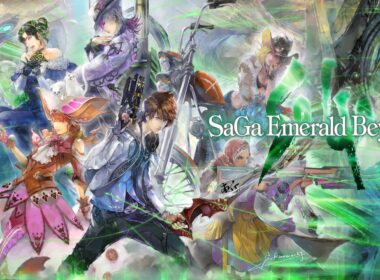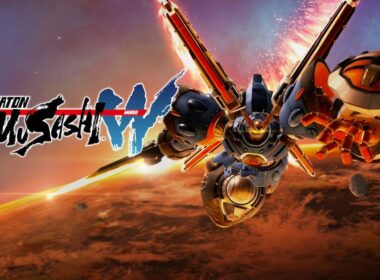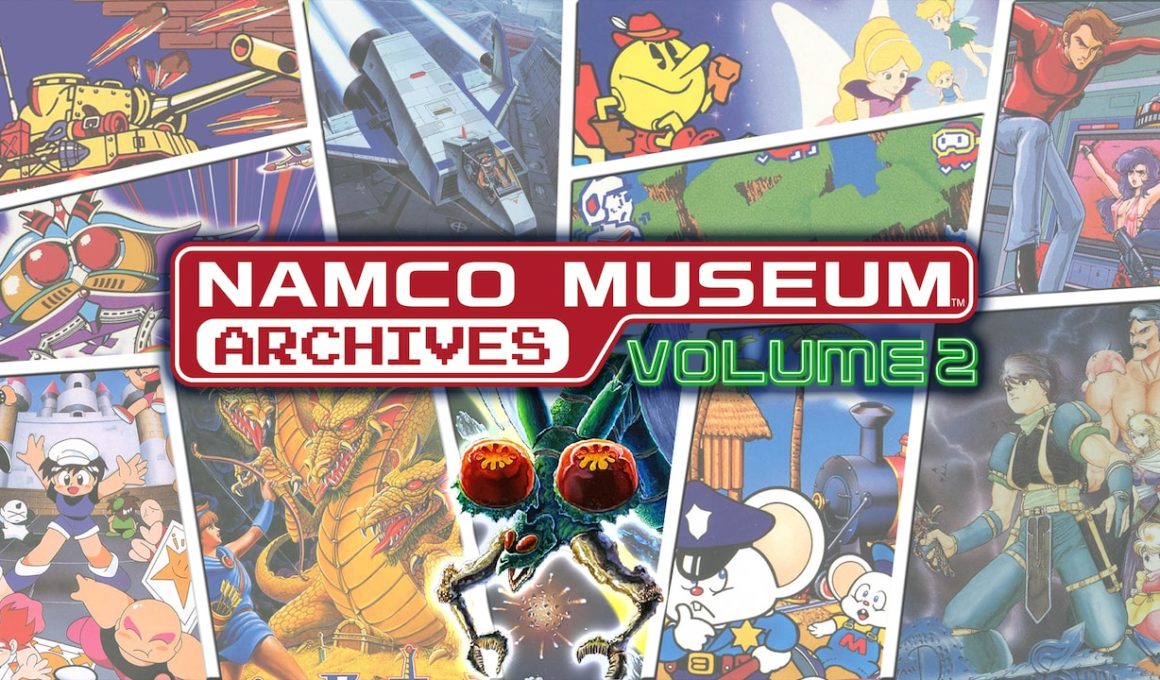Whenever I get the chance to review classic compilations such as this one, I always find myself referring back to Digital Eclipse’s SNK 40th Anniversary Collection. The reason for this is simply because of its fantastic presentation, and how it celebrates the lesser-known titles that pre-date the more famous NEO-GEO years. Granted, many of the games haven’t aged well at all, yet the dedication and attention to detail involved to educate the player of the company’s history are what makes the collection feel special.
If you read my Namco Museum Archives Volume 1 review, you will probably be well aware by now that Namco doesn’t seem at all interested in doing any of that. Besides a rather useless rewind feature (that oddly sets the player back a full minute) along with a few decent screens and filter options, each game is merely just dumped on a carousel and expected to be cherished. An absolute shame really, because outside of Galaga, Rolling Thunder and maybe Super Xevious, Namco Museum Archives Volume 2 has the more obscure line up of games out of the two.
Take Mandel Palace, for instance, a wacky action-puzzler where you pull playing cards from underneath bad guys to spin them out of control. While the game did see a release in the United States, it’s likely that most gamers wouldn’t have even heard of it. What does make this one particularly interesting though, is that it happens to be Game Freak’s first title after transitioning from a self-published video game magazine. That’s right, the same Game Freak who introduced the world to Pokémon.
Many of the games in Namco Museum Archives Volume 2 are generally sequels in one way or another and probably the most famous on the list is of course Galaga. It’s the arcade shooter that began to steer away from Galaxian’s efforts in reflecting a Space Invaders clone with a few added bells and whistles, to becoming a genuine hit of its own accord and influencer to the shoot ’em up genre with its kaleidoscopic snaking enemy patterns.

Galaga’s lesser-known sequel Gaplus – a.k.a Galaga 3 – is also here. However, it never actually made it to the Famicom nor the NES back in the day, so acts more like the fantasy game of the pack by being specially tailored exclusively for this compilation. Its presence may not be nearly as impactful when compared to the 8-bit fantasy port of PAC-MAN Championship Edition found in the first volume, but it’s certainly a neat addition nonetheless.
Another familiar face is the little Dig Dug dude who makes a return in a forgotten but relevantly titled sequel, Dig Dug 2. While he still likes to blow up enemies with a bicycle pump, he now tries his hand at fracking as he traps Pookas and Fygars by digging holes until parts of the island fall apart. The gameplay is very much like 1981 arcade classic Qix and changes the visual formula to a top-down view instead of the worm farm view that the original was known for.
Mappy Land is the NES exclusive sequel to the 1983 arcade original. Similar to the first game, the little mouse from the police force jumps around on trampolines collecting items and avoiding cats. The stages are much more visually diverse than the original game and Mappy can lay traps to keep those menacing mogs in check. Despite the original arcade port only seeing a Famicom release back in the day, this sequel may be the one that many in the west will remember.
The other sequel in the pack is Dragon Buster 2. Like its predecessor, it was only ever released on the Japanese Famicom system. The action changes from the side-scrolling view of the first game in favour of a top-down perspective. The protagonist – now called Carl – has a bow and arrow instead of a sword, and rather than a straight-up boss battler, it becomes more of a confusing, if tedious maze to track though.

One of the more interesting games in Namco Museum Archives Volume 2 has to be Legacy of the Wizard in how it combines platforming, discovery and action RPG into one big back-tracky adventure. You choose a member of a family – including the household pet – to scout for keys and crowns within a sprawling dungeon underneath the grounds of their humble abode. Each family member has their own strengths and weaknesses as they take their turn to mooch out and face the dangers that lie ahead.
More of an update than a sequel, Super Xevious returns in Namco Museum Archives Volume 2 – a vertical shoot ’em up that is as old school as you can get to where the series itself played heavy influence to Konami’s Twinbee games. This particular version is slightly improved over its predecessor, but to be fair, the untrained eye will barely notice a difference outside of several new enemy types.
The ninth game in the collection, Battle City is basically an updated version of Steve Bristow’s 1977 classic TANK in which you shoot the opposition before they destroy your base. The arcade version of Battle City was on the previous Namco Museum collection and is a fun blast with those who remember games of a similar ilk from back in the day. If you recently played Battle Tanks in 51 Worldwide Games, you may have a decent understanding of what to expect.
The final two games on the list go by the way of PAC-LAND and Rolling Thunder. The original 1984 PAC-LAND arcade game was based on the cartoon series airing at the time and a full-on platformer that proceeds Nintendo’s own Super Mario Bros. series. Despite Nintendo’s own Miyamoto and Tezuka’s baby changing the face of platforming games forever, PAC-LAND was a decent attempt at birthing the idea of a more progressive platformer. This particular version didn’t see a western NES release and, sadly, doesn’t really hold up well at all.

Rolling Thunder, a game I do fondly remember playing several versions of as a kid, happens to be a decent port of the arcade original – a title also available on the coin-op focused Namco Museum. This action-platformer has the player controlling a trigger-happy secret agent that can hide behind doors and possess incredible jumping abilities. As with most of the games in Namco Museum Archives Volume 2, the gameplay probably doesn’t hold up to many in this day and age. However, I’m unashamed to say that the nostalgia glasses sit strongly on my eyes and I still had plenty of fun with it regardless.
If you don’t have a pair of nostalgia glasses to hand, then it’s hard to justify purchasing two separate compilations that are little more than a ROM dump with a price tag. The only reason why both of the Namco Museum Archives volumes are worth investing in is if you have a childhood attachment to any of the console versions listed, or have a genuine interest in compiling together yesteryear gaming history in a portable library. The lack of extra features completely takes away from the game’s meaning. After all, isn’t the sole purpose of a museum to provide a taste of the past in an informative way?
Version Tested: Nintendo Switch
Review copy provided by Bandai Namco Entertainment





